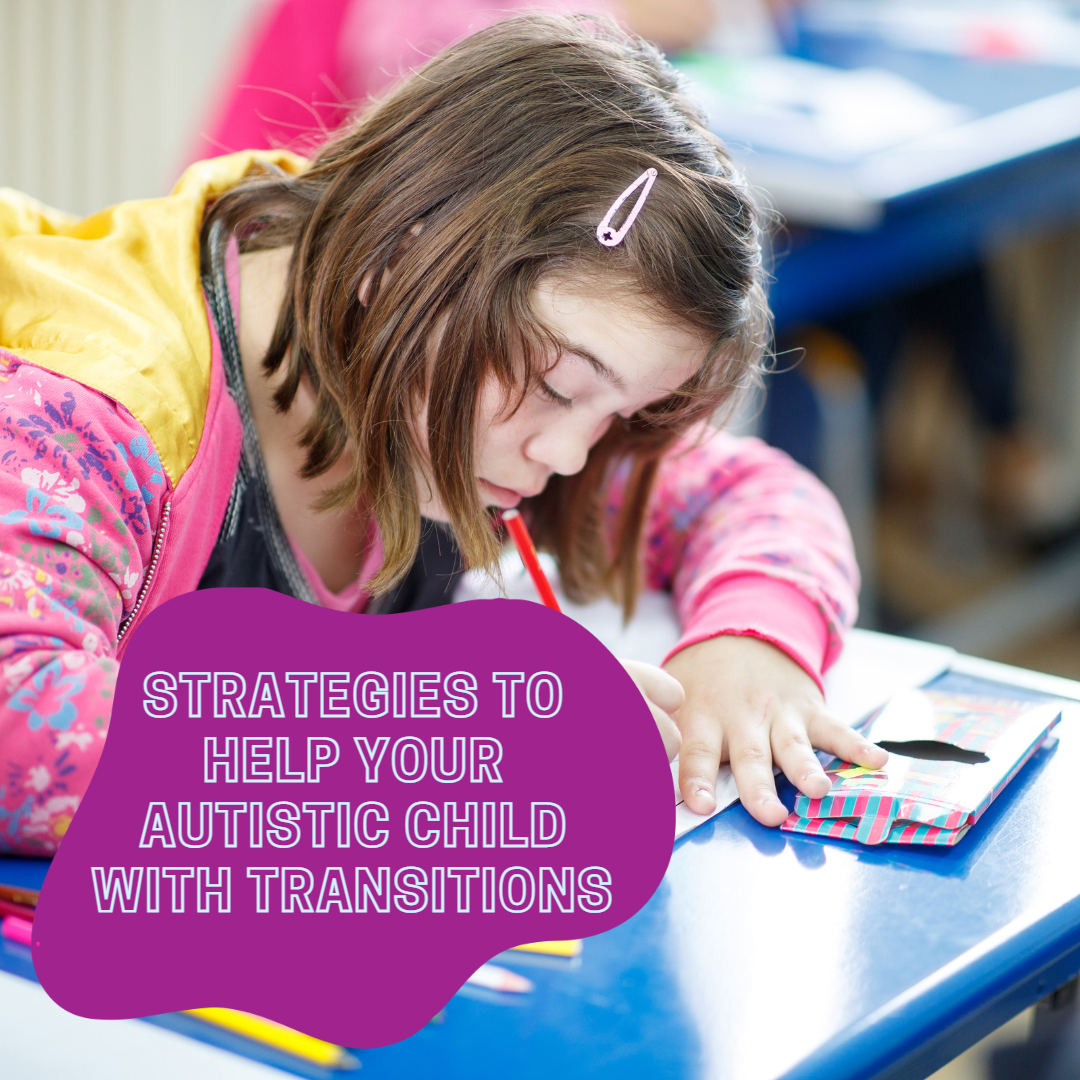Blog
Strategies To Help Your Autistic Child With Transitions

“Routine is a ground to stand on.”
— Henry David Thoreau
In this post, we’re going to talk about strategies to help your autistic child with transitions. We are going to look at specific ideas and suggestions for the third category of transition strategies: Routines. As always, you’ll need to experiment to figure out which strategies work best for your family and which you’ll want to build on/adapt to your individual family’s needs.
Transition Routines strategies
If the same things happen in the same way every day, sensory children feel secure and calm. So you want to create consistent, predictable, familiar routines for the transitions that happen every day, and stick to these routines as closely as you can.Here are examples of some routines you can start with:
• Morning routine
– Note: you want your child to wake up at the same time every day, even on weekends and holidays.– A morning routine can consist of:
Wake up; go to the bathroom; brush teeth (or brush after breakfast if preferred); eat breakfast; wash face; brush teeth; get dressed; brush or comb hair; pack lunch in backpack; put shoes on; put coat on; put backpack on; go out the door.
• Mealtime routine
– Note: you want your autistic child to eat meals at the same time every day.– A mealtime routine can consist of:
Go to the bathroom; wash hands; help with meal-related chores; sit in your chair; eat your meal.
• Next-day-prep routine
– As part of your autistic child’s afternoon (or pre-bedtime, if that works better for your family) routine, you want to prep for the next morning. This prep routine might look something like this:Set alarms (for the same time every morning); load your organization bin, if you use one (one way to keep organized is to assign a bin or container to each family member); make lunch (or help a parent make lunch) to bring to school, if applicable; lay out clothes for the next day; pack backpack.
– Note: you want to involve your child as much as possible to get him invested and on board, but don’t overwhelm him with choices either. For example, offer her a choice between two shirts, not a closet full.
– Packing the backpack includes elements such as making sure that homework is done; anything that needs to go to school (a sharing-time object? a rest-time book? tissues?) is packed; pencils are sharpened; a fidget object (if applicable) is packed, etc.
• Bedtime routine
– Note: you want your child to go to bed at the same time every day.– Going to bed becomes harder if your child is engaged in a very enjoyable activity just before he is asked to get into bed. Therefore, you want to create a nighttime routine that takes this into account in order to ease the transition from day to night.
A bedtime routine for younger children might look like this:
Set a timer for a final five or ten minutes of playtime; brush teeth; wash face; bath; bedtime story; bedtime song; hug/kiss; lights out.
A bedtime routine for older autistic children might look like this:
Set a timer for a final five or ten minutes of activity; turn off screens; brush teeth; wash face; shower; read in bed or listen to soft music for a pre-arranged amount of time; lights out.
– Of course, you’ll want to adapt routines to your particular family and daily life, as well as create additional strategies for other everyday transitions (going to school? after school homework and downtime?).
I hope you enjoyed this post discussing strategies to help your autistic child with transitions and that these tips help empower you and your child.
What successful routines do you follow? Are there others which didn’t work as well? Please share your thoughts in the comments section below. Also, let me know there or via email what topics you would like to discuss or hear more about.
Feel free to share or quote from this blog (with attribution, please, and if possible, a link), and to repost on social media.
I look forward to hearing from you!
All the best,
Miriam
Don't want to miss a Thing?
Follow us on Instagram, Facebook, Youtube, and Pinterest to get updates and stay in the loop!
Other Post You May be Interested in:
